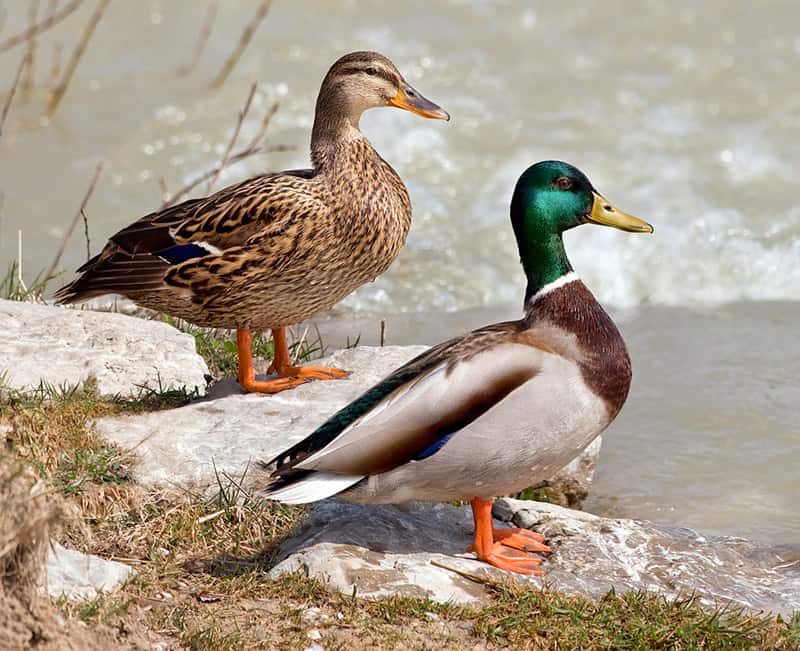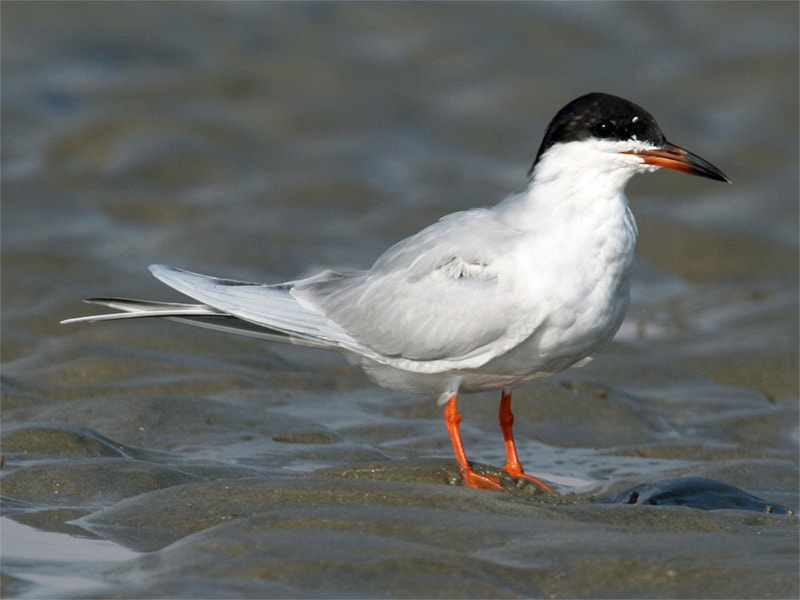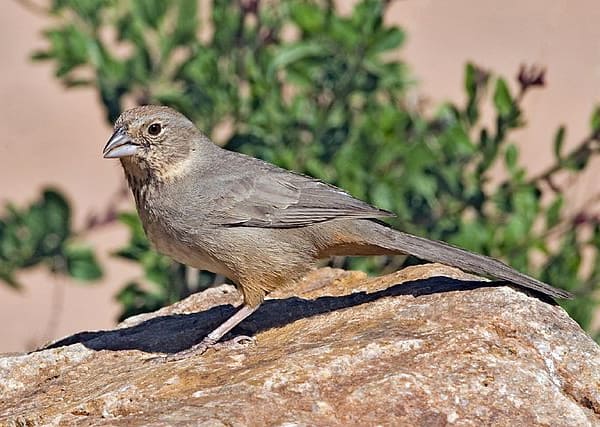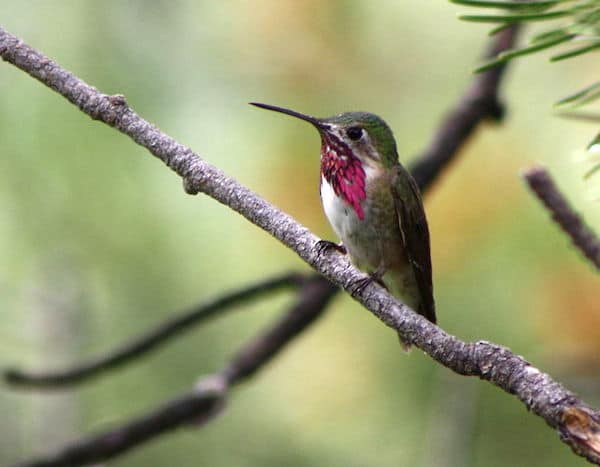The male mallard has a green head and yellow bill. It’s easily recognizable, but female mallards—with their overall dark brown coloration—can be confused with black ducks, mottled ducks, and other female ducks. Look for her orange and black bill. Mallards are fairly large ducks with a 23-inch body length.
Listen for
Female Mallards give the typical duck call: quaaack!-quackquackquack! This sounds very much like Donald Duck of cartoon fame. Males give a high-pitched queeep!
Find It
Abundant all across the continent, the mallard is known to interbreed commonly with black ducks and other wild duck species, as well as with domesticated ducks. Large numbers of semi-tame mallards exist on city park ponds, golf courses, and reservoirs, getting by on handouts from humans.
Like other dabbling ducks, mallards prefer shallow bodies of fresh water at all times of year, including marshes, flooded woodlots, ponds, and swamps. They can be found year-round across most of the United States, but a large number of mallards breed in the Far North and spend the winter in the Southeast.
Feed It
Mallards feed by scooping up seeds and plant material from the water’s surface, by tipping up—tails in the air—to reach submerged plants, and by grazing for waste grain in agricultural fields. They eat everything from seeds and vegetation to insects, small fish, crawfish, and frogs.
Mallard Nesting Behavior
Mallards pair up well before the spring breeding season. The hen mallard chooses the nest site, usually in or near thick vegetation on the ground. She then builds a small bowl out of nearby plant material and lines it with her own down. The hen lays between 7 and 12 eggs and incubates them for a month.
Like other ducks, mallard ducklings leave the nest within hours after hatching and follow their mother to the nearest water. Though ducklings feed themselves right away, it’s nearly two months before they are able to fly.
Predators take a heavy toll on nests and young, especially in parks where natural predators are augmented by domestic pets.




